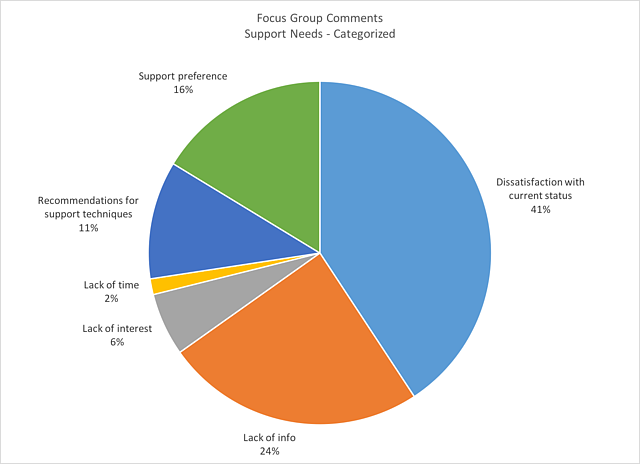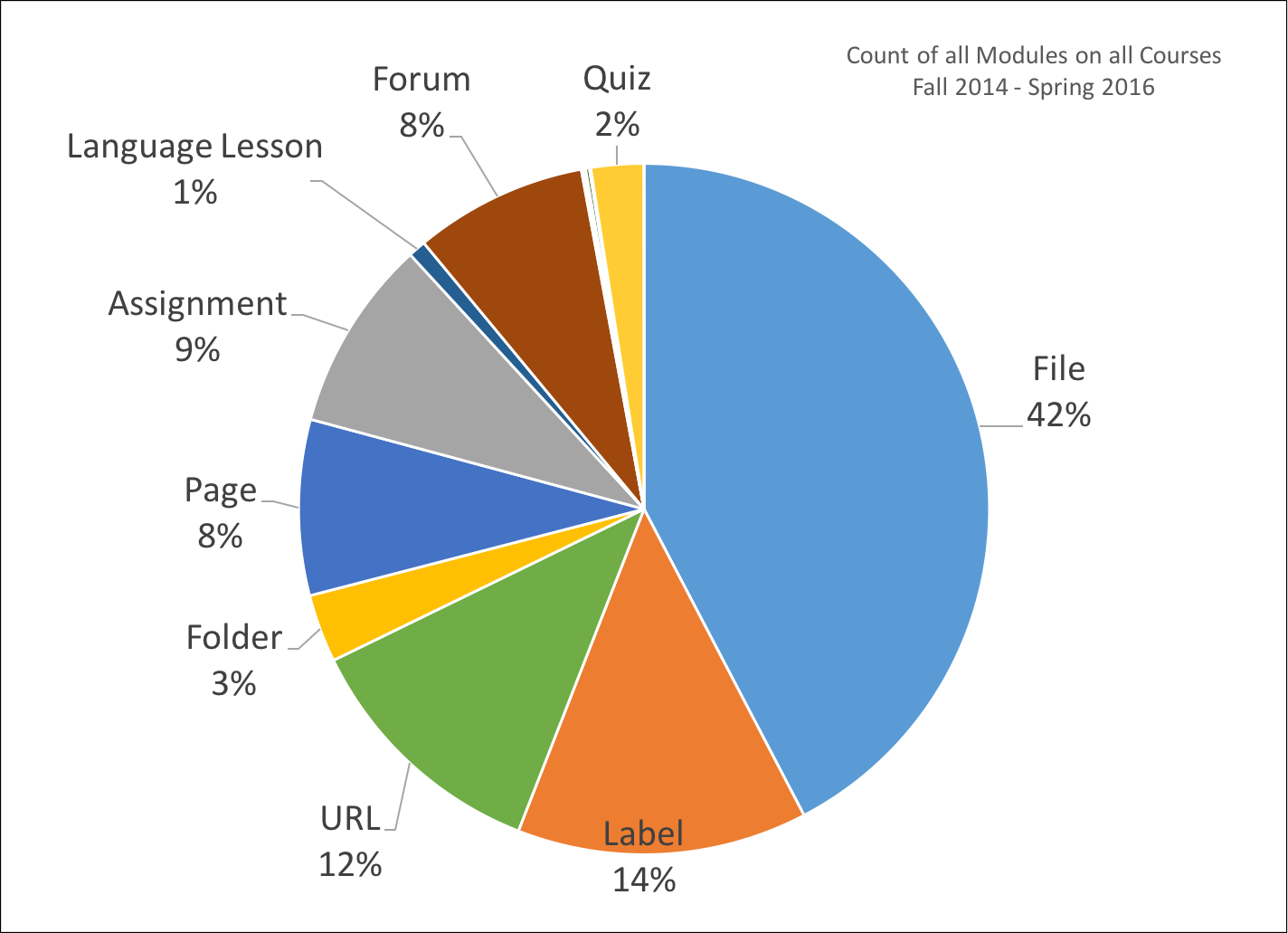
This post will discuss how one college, through a review study of their Moodle use has unsightly came to the conclusion that Moodle is viewed as unsatisfactory for faculty members and students. Reading the study results, it is clear to me that the problem is not Moodle per se but how it is used by faculty members and students. Moodle itself claims to have been developed from a social constructionist stance and purports that “finding balance” is necessary. In this college LMS review highlights below, you will see that Moodle was not used for what it was intended too. You can extrapolate this to many other institutions that do not leverage the power of this “Swiss knife”. Let’s start.
Carleton College Moodle Evaluation and Needs Review
This evaluation and needs review was incited by reports and blog posts from both faculty members and students. The general feeling towards Moodle was this
Moodle is not fulfilling the curricular technology needs at a satisfactory level.
With the support of Future Learning Technologies Groups, the college conducted a campus-wide evaluation of the use of Moodle. In 2016, students and faculty were invited to participate in an online survey to gather data. The survey focused on assessing the satisfaction and importance of various features supported in Moodle 3.1. At the same time, the college investigated analytics from Moodle server to give more information about how and what is being used in Moodle. Finally, they conducted a focused group interview to gather more in-depth feedback.
Satisfaction and Importance Survey Results
All faculty were invited to complete an online survey asking about their use and satisfaction with Moodle. Faculty who indicated that they did not use Moodle at all were only asked to indicate the value they placed on various features that are typically provided by the learning management system (LMS). Those who indicated they did use Moodle were also asked how satisfied they were with how Moodle provided those same features.
Students were also surveyed on their satisfaction with Moodle and how it was used for their courses. A sample of 900 students were invited to participate in the survey.
Faculty who responded indicated that most of the communication activities listed were important to their work, and that they were quite satisfied with how Moodle performed these activities. As for assignment activities, the majority of faculty members do not use them, and those who used them were satisfied with them. Faculty placed a lot of importance on most course administration activities listed, and those who used Moodle for these activities were generally satisfied with it. However, a over half of respondents did not use Moodle for grade calculation, combining materials for separate sections of a course, or for controlling access by groups of students. There was some importance placed on interactions such as online discussions, signup sheets or peer review activities, but most faculty did not seem to use Moodle for these types of interactions.
The student survey was separated into five sections - Individual Course Information, Course Information Across Multiple Courses, Assignments, Grading & Feedback and Non-Course Activities. Students placed a lot of importance on most of the features relevant to individual course pages, particularly access to course readings and syllabus information. They were generally satisfied with their experience with most of these features in courses that used them, but seemed to be less satisfied with notification options from Moodle. Student comments indicated that there was a desire to retain access all past course sites and have a consolidated calendar of assignment due dates. Several students indicated that they were unaware that Moodle could provide a consolidated calendar of dates, and a few indicated confusion over how to navigate within Moodle. Students placed a lot of importance on assignment features such as accessing assignment prompts and uploading their submissions to assignments, but less importance on collaborative activities. Students indicated that they were generally satisfied with assignment prompts access and submission upload, but collaborative features have not often been used in classes they took. Students placed a lot of importance on accessing grade and feedback information, both at the assignment and course levels. However, there was uneven satisfaction levels with these features, with some students indicating that they have never had a course that used them. Few students answered these questions because they had never used Moodle for non-course activities (such as student organizations, etc). Those who did indicated that features for these situations were generally important, however most indicated that they had never used Moodle for these purposes.
Focus Group Results
Seven focus groups sessions were conducted with faculty and staff to discuss opinions of Moodle and the importance of curricular technologies, in general. Twenty-three people attended the discussions. The comments were split into sub-categories as listed below:
Course Needs
- Adaptive Lessons or Quizzing - activities involving adaptive lessons or quizzing
- Archival - using Moodle to archive information about the course
- Communication - using Moodle to communicate course information with students
- Desired setting or feature - request for a specific feature or function that is not currently available
- Discussion - using Moodle to host online discussions in addition to in-class activities
- Information distribution - using Moodle to distribute course information to students
- Online interactions - using Moodle for other online interactions, such as getting student feedback or conducting peer review
- Organizational - using Moodle to organize the course information for students
- Scheduling - using Moodle to schedule appointments, tutor sessions, presentations, etc
- Specialized Tools - using or linking to Moodle for discipline-specific activities or features
- Tracking & Grading - using the assignment grading, gradebook, or other ways to track student activity
Support Needs
- Dissatisfaction with current status - expression of dissatisfaction with current features, or the way features work
- Lack of information - comment on how information is not available or accessible to those who need it
- Lack of interest - comment demonstrating a lack of interest in using the features of Moodle
- Lack of time - comment on how there is not enough time available to use Moodle well
- Recommendations for support techniques - recommendations for how ITS could better support faculty use of Moodle
- Support preferences - expression of which support materials are preferred

Moodle Database Results
This analysis was done on the data available in the Moodle databased for course pages used during the academic year from Fall 2014 through Spring 2016. This analysis included about 5130 course pages,
Overall Moodle Usage
- 42% of all objects added to Moodle course pages are Files.

- Other forms of information distribution make up another 36% of all objects
- added to Moodle course pages
- Other modules commonly used include Assignments (9%), Forums (8%) and Quizzes (2%)
Conclusion: The primary use of Moodle is to distribute information and resources to students.
The Moodle server reports also included in-depth view of forum usage reveal that they ere used almost exclusively for distributing information, and rarely used for interactive discussion. The Assignment module was sometimes used, but it was not often used to return feedback to students. The primary use of Moodle was to distribute information and resources to students. Gradebook is not often used to calculate or share grades with students.
The Moodle interaction analysis showed that
- Students were mostly viewing Moodle sites, with the most views being of the main course pages, module pages, assignment submissions and discussions.
- Student use of Moodle increased as the content available on the Moodle site increased, with student usage increasing quite a bit for course pages with the most content.
- Teachers were mostly viewing Moodle sites, although not as much as students. The most views were of the main course pages, user lists, module pages and grade reports.
Commentary
Based on the triangulated college Moodle review above, there is a clear indication of the disparity between faculty use and faculty perception of Moodle. This indicates that this college faculty professional development on using Moodle, instructional design faculty professional development, and ,as a result faculty, technology integration attitudes need to be addressed. The faculty members were mainly using Moodle as a file repository. This is fine as a start but this was not why Moodle was built. The most important activities and modules in Moodle like discussion forums, lessons, workshops, groups and groupings etc. were not used, and if they were , they were sporadic and not based on sound pedagogy. As a result, students do not appreciate the Moodle platform.
This post was first published on my company’s blog.

Comments
Post a Comment